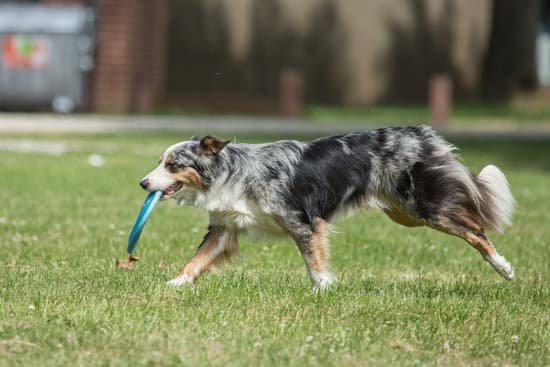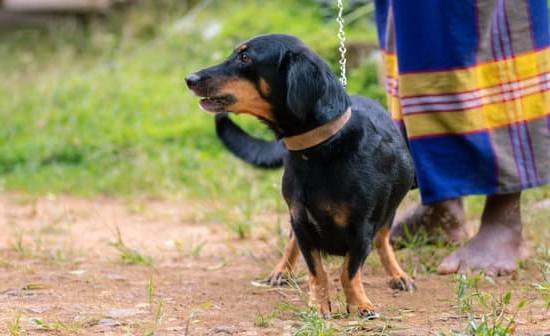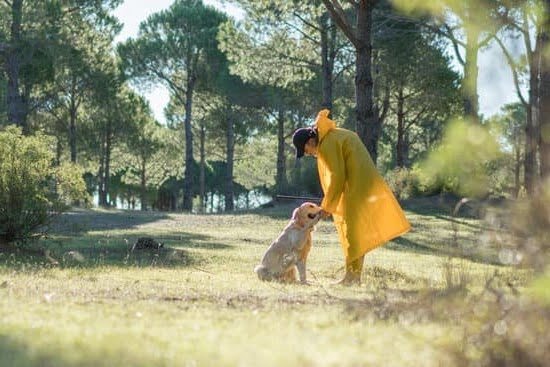Training your dog to go potty outside is an essential part of pet ownership, and it can greatly benefit both you and your furry companion. In this article, we will explore the importance of outdoor potty training for dogs and the advantages it offers for both the pet and the owner.
Understanding your dog’s potty behavior is crucial, as well as establishing a routine, choosing the right potty spot, using positive reinforcement techniques, and being patient and persistent throughout the training process. This comprehensive guide will help you navigate the challenges of outdoor potty training and set you and your dog up for success.
The first step in successfully training your dog to go potty outside is understanding why it’s important. Not only does outdoor potty training promote good hygiene for your pet, but it also helps maintain a clean and odor-free living environment for you.
Moreover, providing your dog with regular opportunities to relieve themselves outside contributes to their overall physical and mental well-being. By learning how to train your dog go potty outside, you can avoid common indoor accidents and enjoy a strong bond with your furry friend based on trust and communication.
As we delve into the various aspects of outdoor potty training in this article, you’ll gain insight into your dog’s behavior patterns when it comes to going potty. Additionally, we’ll discuss effective strategies for establishing a consistent routine and selecting the right outdoor area for your dog to do their business.
Positive reinforcement techniques will also be examined in detail, along with tips on how to handle setbacks and accidents during the training process. With patience, persistence, and consistency, you can successfully train your dog to go potty outside and reap the rewards of a well-behaved canine companion.
Understanding Your Dog’s Potty Behavior
In order to successfully train your dog to go potty outside, it’s crucial to understand your pet’s potty behavior. This involves paying attention to your dog’s signals and patterns, which can provide valuable insight into when they need to go potty. Some common signs that your dog needs to go potty include whining, circling a specific area, and restlessness. By recognizing these signals, you can effectively anticipate when your dog needs to relieve themselves.
Another important aspect of understanding your dog’s potty behavior is identifying their individual potty schedule. Dogs typically need to go potty after meals, playtime, and upon waking up in the morning or after a nap. By familiarizing yourself with your dog’s unique patterns, you can establish a routine that aligns with their potty needs.
Creating a strong bond with your pet is also essential for understanding their behavior. Spending quality time with them allows you to observe their habits and tendencies, enabling you to anticipate their need to go outside. Additionally, by being attentive and responsive to your dog’s cues, you can build trust and communication that will contribute to successful outdoor potty training.
| Common Signs | Potty Schedule |
|---|---|
| Whining | After meals |
| Circling a specific area | After playtime |
| Restlessness | Upon waking up or after a nap |
Establishing a Routine
Creating a consistent potty schedule for your dog is essential in successfully training them to go potty outside. By establishing a routine, you can help your dog understand when and where they should eliminate, making the outdoor potty training process more effective. Here are some tips for setting regular potty times throughout the day:
- Take your dog outside first thing in the morning, as well as right before bedtime.
- Plan additional potty breaks after meals, playtime, and naps.
- Try to keep the outdoor potty times consistent every day, as dogs thrive on predictability and routine.
Consistency is key when it comes to establishing a routine for outdoor potty training. By following a set schedule, you can help your dog learn when they should be going outside to do their business.
In addition to setting specific potty times, it’s important to be patient and provide gentle guidance during the outdoor potty training process. Dogs may take some time to adjust to the new routine, so stay consistent with your efforts and remain positive throughout the training journey.
Choosing the Right Potty Spot
When it comes to training your dog to go potty outside, selecting the right potty spot is crucial for success. The ideal outdoor area should be easily accessible to your dog and safe for them to use regularly. This means choosing a spot that is not too far from your home, especially during extreme weather conditions, and free from potential hazards or distractions that could deter your dog from using it as their designated bathroom area.
Accessibility and safety are key factors in determining the right potty spot for your dog. It’s important to consider any physical limitations or health issues that may affect your dog’s ability to reach the chosen area. Additionally, ensuring that the spot is well-lit, especially during nighttime walks, can make a significant difference in preventing accidents and providing a comfortable environment for your dog to relieve themselves.
The availability of the chosen potty spot also plays a role in its suitability for outdoor potty training. If the spot is consistently accessible and convenient for both you and your dog, it will be easier to establish a regular routine and reinforce positive behavior. Ultimately, choosing the right potty spot sets the foundation for successful outdoor potty training by providing a consistent location where your dog can comfortably do their business.
| Factors to Consider | Importance |
|---|---|
| Accessibility | Easy access makes it convenient for the dog and owner |
| Safety | Avoids potential hazards or distractions for the dog |
| Availability | Easily accessible spot enables establishing a regular routine |
Positive Reinforcement Techniques
One of the most effective methods for training your dog to go potty outside is through the use of positive reinforcement techniques. This involves rewarding your dog with treats and praise when they successfully go potty in the designated outdoor spot. By associating positive outcomes with going potty outside, you can encourage and motivate your dog to repeat this behavior in the future.
When using positive reinforcement, it’s important to have a supply of small, tasty treats on hand to quickly reward your dog as soon as they finish going potty outside. These treats should be reserved specifically for potty training purposes to maintain their effectiveness. Additionally, verbal praise and enthusiastic encouragement can further reinforce the desired behavior, making your dog more eager to comply with the outdoor potty training routine.
The key to successful positive reinforcement is timing. It’s crucial to offer the treat and praise immediately after your dog finishes going potty outside, so they can make a clear connection between their action and the reward. Consistency in using these techniques will help solidify the habit of going potty outside for your dog, leading to long-term success in outdoor potty training.
Patience and Persistence
The Role of Patience in Successful Training
Training your dog to go potty outside requires a considerable amount of patience. Every dog learns at its own pace, and some may take longer to grasp the concept of outdoor potty training.
It’s important to remain patient and avoid becoming frustrated if your dog doesn’t immediately understand what is expected of them. Keep in mind that accidents and setbacks are a natural part of the learning process, and it’s essential to stay patient throughout the training period.
Perseverance in Training Efforts
Persistence is key when it comes to outdoor potty training for dogs. Consistently reinforcing the desired behavior by taking your dog outside at regular intervals, using positive reinforcement techniques, and closely monitoring their bathroom habits is essential for success.
Even if there are occasional slip-ups or accidents, it’s crucial to remain persistent in your efforts and continue with the established routine. By being persistent in your training approach, you can help your dog understand where they should be going potty.
Coping With Setbacks
Despite your best efforts, setbacks can occur during the outdoor potty training process. Whether it’s due to changes in routine, health issues, or other factors, accidents may happen even after significant progress has been made. It’s important to handle setbacks calmly and not to lose sight of the end goal.
Consider revisiting some basic training principles and evaluating potential reasons behind the setback. Remember that patience and persistence are vital in overcoming setbacks and ultimately achieving successful outdoor potty training for your dog.
Dealing With Accidents
Accidents are an inevitable part of the outdoor potty training process, especially when it comes to teaching your dog to go potty outside. It’s essential to handle these situations with patience and understanding, as punishing your dog for accidents can be counterproductive. Here are some tips for dealing with accidents effectively:
- Stay calm and avoid showing frustration or anger towards your dog.
- Immediately clean up the accident using an enzymatic cleaner to remove any lingering odors that could attract your dog back to the same spot.
- Reinforce positive behavior by taking your dog outside after cleaning up and offering praise and treats if they go potty in the appropriate outdoor area.
Remember that accidents are a normal part of the learning process, and it’s crucial not to get discouraged. Consistency in training methods is key, so continue implementing the same routine and positive reinforcement techniques even after accidents occur.
Building a strong bond with your dog through patience and understanding will ultimately lead to successful outdoor potty training. By staying consistent in your approach and offering encouragement rather than punishment, you’ll help your dog learn the desired behavior of going potty outside.
Consistency Is Key
The Importance of Consistency
Consistency is a crucial aspect of outdoor potty training for dogs. By providing a consistent routine and reinforcing positive behavior, you can effectively train your dog to go potty outside. Dogs thrive on predictability and routine, so establishing consistent expectations will help them understand where and when they should eliminate.
Maintaining Regular Potty Times
To ensure consistency in outdoor potty training, it’s essential to establish regular potty times throughout the day. Take note of your dog’s natural bathroom schedule and try to align it with your own daily routine. By consistently taking your dog outside at these specific times, you can reinforce their understanding that outside is the appropriate place to go potty.
Staying Persistent
Consistency also requires persistence in your training efforts. There may be setbacks and challenges along the way, but it’s important to remain patient and dedicated to the outdoor potty training process. By staying persistent and continuing to provide positive reinforcement, you can help your dog develop a reliable habit of going potty outside.
Conclusion
In conclusion, training your dog to go potty outside is a beneficial and rewarding endeavor for both you and your furry companion. By understanding your dog’s potty behavior, establishing a consistent routine, choosing the right potty spot, using positive reinforcement techniques, and maintaining patience and persistence, you can successfully train your dog to eliminate outdoors.
While dealing with accidents may be inevitable during the training process, it’s essential to remain consistent in your approach and handle setbacks with grace.
Successfully training your dog to go potty outside not only provides convenience for you as an owner but also contributes to your dog’s overall well-being. Outdoor potty training allows your dog to engage in natural behaviors and explore the outdoors while promoting cleanliness and hygiene in your home environment.
With dedication and perseverance, you can ensure that outdoor potty training becomes a long-term habit for your dog, leading to a happier and healthier relationship between you and your pet.
In summary, by following the tips and techniques outlined in this article, you can achieve success in outdoor potty training for your dog. Through consistency, positive reinforcement, and a deep understanding of your dog’s needs, you can enjoy the rewards of having a well-trained companion who knows how to go potty outside.
So take the time to invest in this vital aspect of your dog’s care and reap the benefits of a harmonious living environment for both you and your beloved pet.
Frequently Asked Questions
How Do You Train a Dog to Pee and Poop Outside?
The key to training a dog to pee and poop outside is consistency and positive reinforcement. Start by taking your dog outside frequently, especially after meals and naps. When they eliminate outside, praise them and offer a treat to reinforce the behavior.
If you catch them in the act of eliminating indoors, interrupt them and immediately take them outside. Over time, they will associate going potty with being outdoors and receive positive reinforcement for doing so.
How Long Does It Take for a Dog to Learn to Go Potty Outside?
The time it takes for a dog to learn to go potty outside varies depending on the individual dog, their age, breed, and previous experiences. Some dogs may pick up on the concept quickly within a few weeks, while others may take several months.
It’s important for owners to be patient and consistent with training, as well as understanding that accidents are an expected part of the learning process.
What to Do When Your Dog Won’t Go Potty Outside?
If your dog won’t go potty outside, it’s important to rule out any medical issues first by consulting with a veterinarian. Once medical issues have been ruled out, consider if there have been any changes in their environment or routine that could be causing stress or anxiety.
It’s also possible that they may need more patience and consistent training to feel comfortable going potty outside. Adjusting the training approach or seeking help from a professional trainer or behaviorist may be necessary if the issue persists.

Welcome to the blog! I am a professional dog trainer and have been working with dogs for many years. In this blog, I will be discussing various topics related to dog training, including tips, tricks, and advice. I hope you find this information helpful and informative. Thanks for reading!





